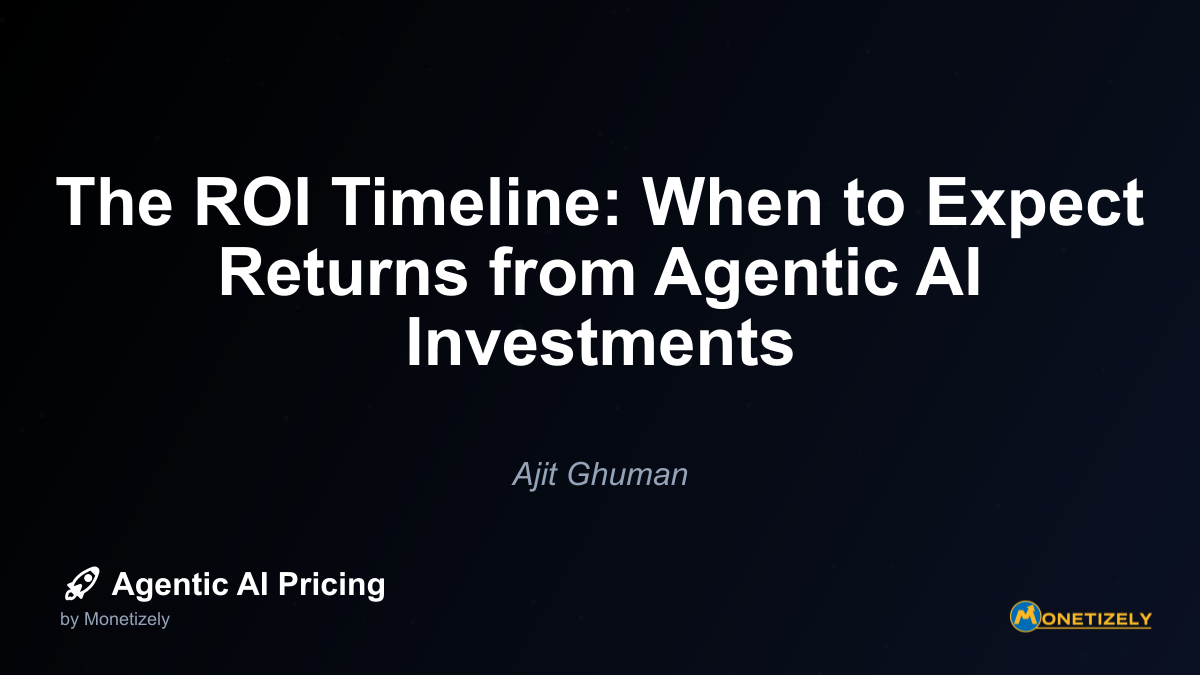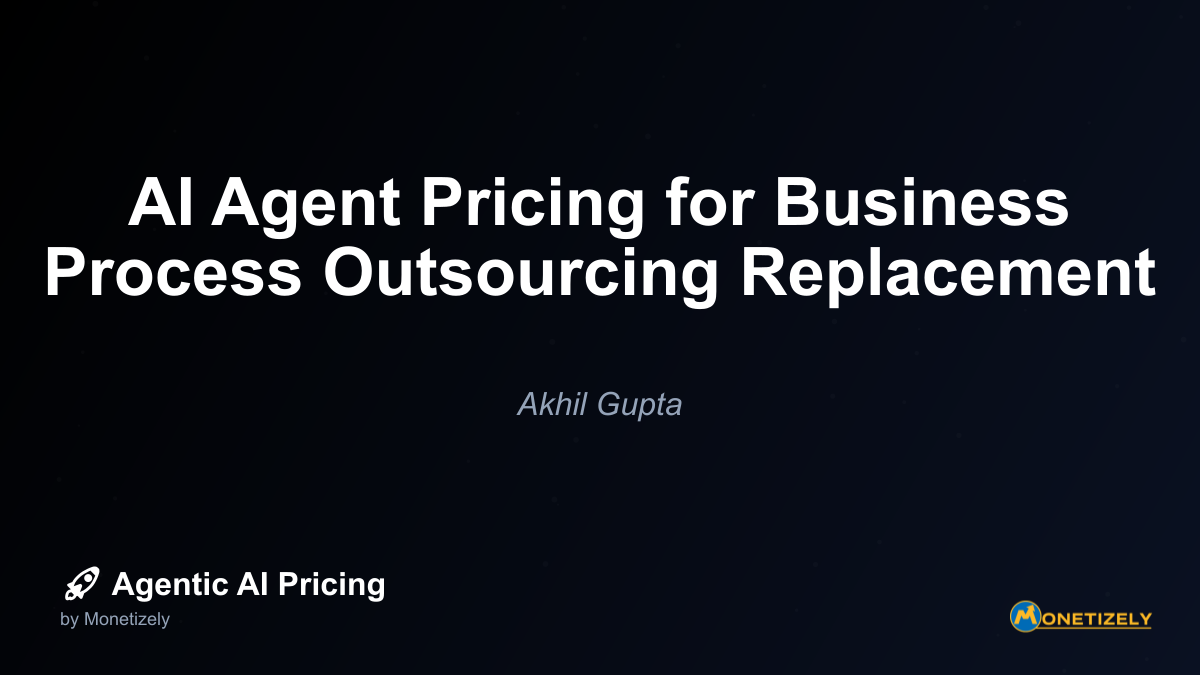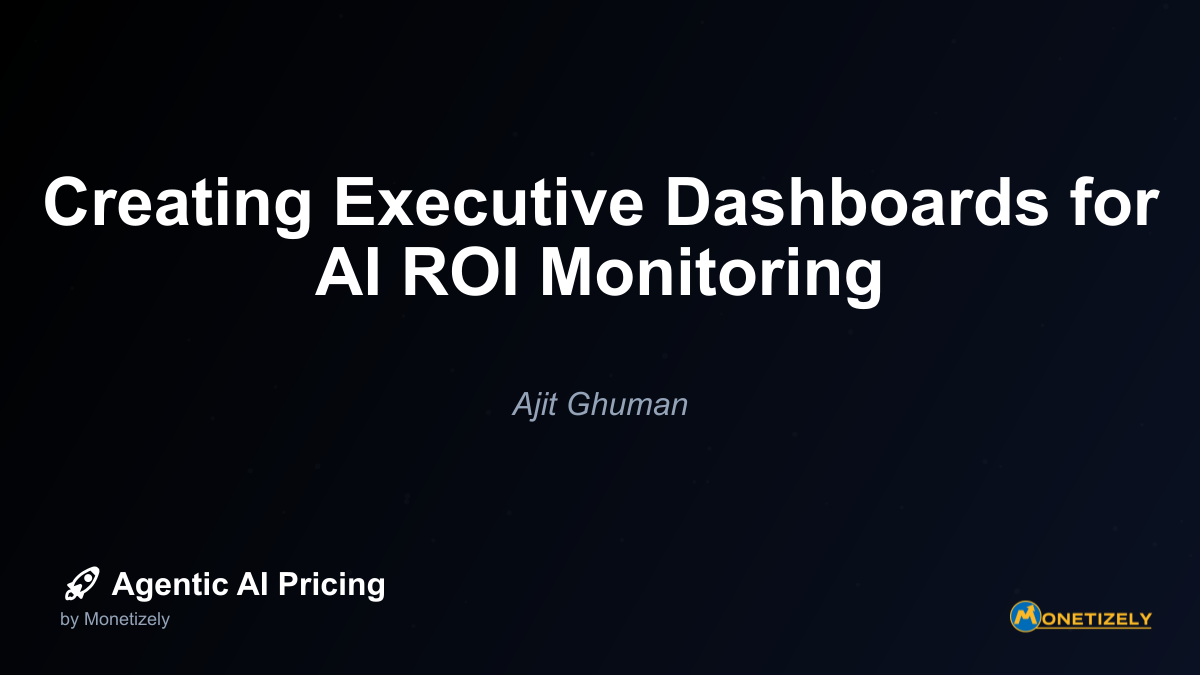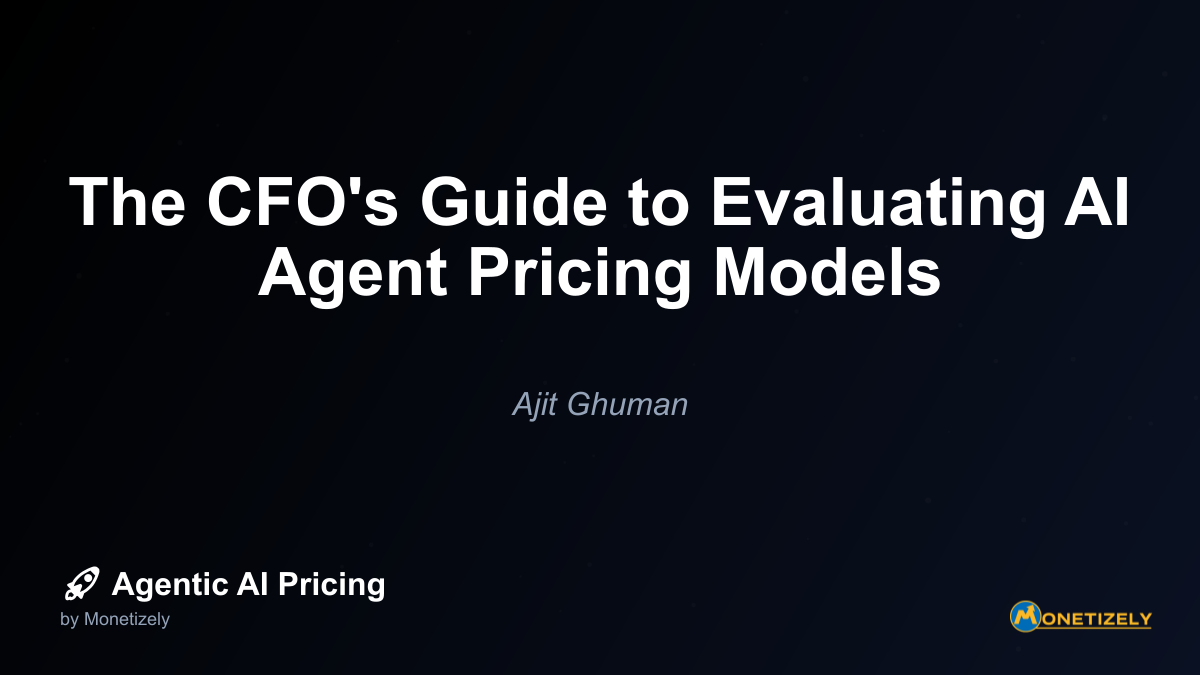· Ajit Ghuman · ROI and Value · 9 min read
Total Cost of Ownership (TCO) for AI Solutions.
AI and SaaS Pricing Masterclass
Learn the art of strategic pricing directly from industry experts. Our comprehensive course provides frameworks and methodologies for optimizing your pricing strategy in the evolving AI landscape. Earn a professional certification that can be imported directly to your LinkedIn profile.
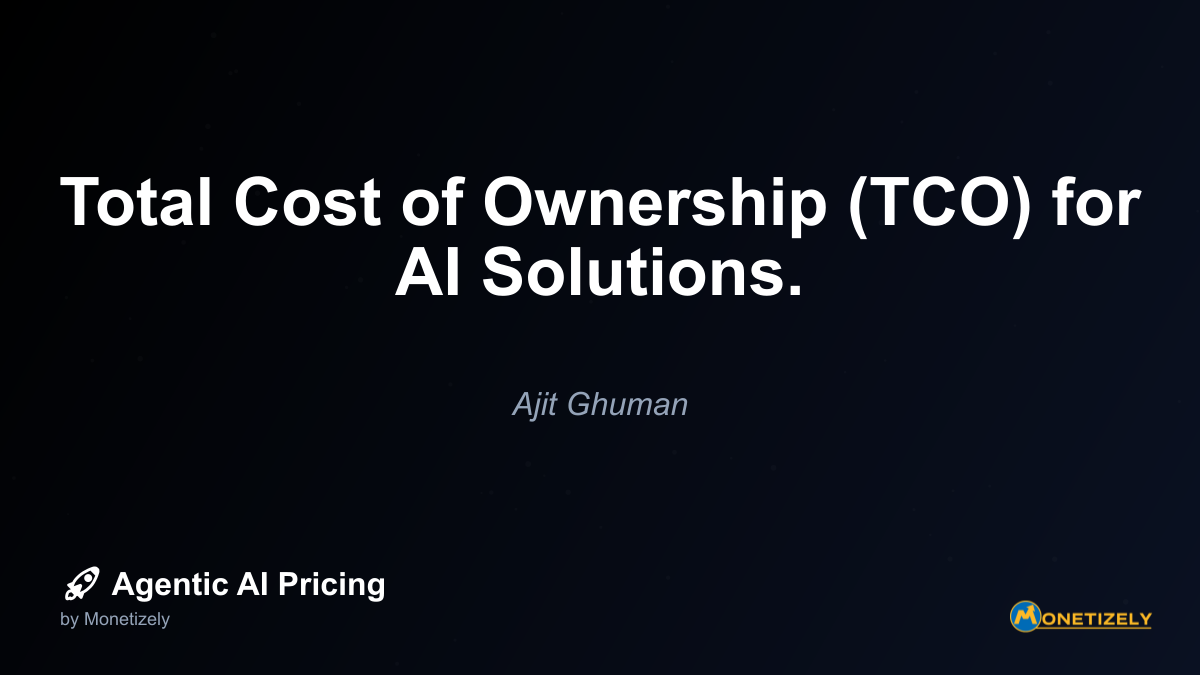
In today’s rapidly evolving technology landscape, artificial intelligence (AI) solutions promise transformative benefits for organizations across industries. However, the decision to implement AI involves more than just evaluating the upfront price tag. Understanding the Total Cost of Ownership (TCO) for AI solutions is crucial for making informed investment decisions and accurately forecasting the financial impact of AI adoption.
What is Total Cost of Ownership (TCO)?
Total Cost of Ownership represents the comprehensive financial assessment of an investment over its entire lifecycle. Unlike the initial purchase price, TCO encompasses all direct and indirect costs associated with acquiring, deploying, operating, and eventually decommissioning a solution.
For AI implementations, TCO provides a holistic view of the financial commitment required, helping decision-makers avoid unexpected expenses and budget shortfalls. It transforms the purchasing decision from a simple price comparison to a strategic evaluation of long-term value.
Why TCO Matters Particularly for AI Solutions
AI solutions present unique TCO considerations compared to traditional software or hardware investments. The complexity, ongoing evolution, and organizational impact of AI systems create multifaceted cost structures that extend far beyond licensing fees.
Organizations that focus solely on initial acquisition costs often encounter unexpected expenses that can derail implementation timelines, exceed budgets, and diminish projected ROI. A comprehensive TCO analysis helps prevent these scenarios by accounting for both obvious and hidden costs throughout the AI solution lifecycle.
The Components of AI Solution TCO
Direct Acquisition Costs
The most visible component of TCO includes the initial expenses directly associated with purchasing the AI solution:
Software Licenses: The upfront cost of acquiring the AI software, which may follow perpetual, subscription, or consumption-based pricing models.
Hardware Requirements: Physical infrastructure needed to deploy and run AI solutions, including servers, specialized processing units (GPUs/TPUs), storage systems, and networking equipment.
Cloud Service Fees: For cloud-based AI solutions, this includes compute resources, storage, API calls, and data transfer costs, which typically follow consumption-based pricing models.
Implementation Services: Professional services for initial deployment, customization, and configuration of the AI solution.
While these costs are generally transparent during the procurement process, they represent just the tip of the TCO iceberg.
Integration and Customization Costs
Integrating AI solutions into existing technology ecosystems often requires significant investment:
Systems Integration: Expenses associated with connecting the AI solution to existing databases, applications, and workflows. This may involve developing custom APIs, middleware solutions, or data pipelines.
Data Preparation and Migration: Costs related to extracting, transforming, and loading data from legacy systems into formats compatible with the AI solution.
Customization and Configuration: Expenses for tailoring the AI solution to meet specific business requirements, including model training, parameter tuning, and workflow customization.
Testing and Validation: Resources devoted to ensuring the integrated solution functions correctly, including user acceptance testing, performance testing, and security validation.
These integration costs can often exceed the initial purchase price, particularly for organizations with complex technology landscapes or unique business requirements.
Operational and Maintenance Costs
Once deployed, AI solutions generate ongoing operational expenses:
Infrastructure Management: Continuous costs for maintaining the hardware or cloud resources that power the AI solution.
Software Updates and Upgrades: Expenses associated with keeping the AI solution current, including subscription renewals, version upgrades, and compatibility updates.
Model Retraining and Refinement: Resources required to continuously train and refine AI models as new data becomes available or business requirements evolve.
Performance Monitoring and Optimization: Costs associated with monitoring AI system performance and implementing optimizations to maintain efficiency.
Security and Compliance: Ongoing investments in securing AI systems, managing access controls, and ensuring regulatory compliance.
These operational costs represent a significant portion of TCO and typically extend throughout the solution’s lifecycle.
Human Resource Costs
AI implementations invariably impact human resource allocation and requirements:
Training and Skill Development: Expenses for training employees to effectively use, manage, and derive value from the AI solution.
New Roles and Expertise: Costs associated with hiring specialized talent, such as data scientists, AI engineers, or machine learning operations (MLOps) professionals.
Change Management: Resources devoted to managing organizational change, addressing resistance, and facilitating adoption of AI-driven processes.
Ongoing Support: Internal or external support resources needed to address issues, answer questions, and maintain the AI solution.
Human resource costs are frequently underestimated in TCO calculations but can significantly impact the overall investment required for successful AI implementation.
Hidden Costs That Often Surprise Organizations
Beyond the more obvious components of TCO, several hidden costs can catch organizations by surprise:
Opportunity Costs and Productivity Impact
Implementation Disruption: Temporary productivity losses during the transition to AI-powered systems and workflows.
Learning Curve Inefficiencies: Reduced efficiency as users adapt to new AI-driven processes and interfaces.
Opportunity Costs: Resources diverted from other strategic initiatives to support AI implementation and management.
Data-Related Expenses
Data Acquisition: Costs for purchasing or accessing external data to train or enhance AI models.
Data Storage and Management: Ongoing expenses for storing, backing up, and managing the increasing volumes of data generated by and required for AI systems.
Data Quality and Governance: Resources devoted to ensuring data accuracy, consistency, and compliance with policies and regulations.
Technical Debt and Scalability Challenges
Technical Debt Accumulation: Future costs resulting from expedient implementation decisions that create maintenance or upgrade challenges.
Scalability Investments: Additional expenses required to scale AI solutions as usage, data volumes, or performance requirements increase.
Integration Maintenance: Ongoing costs to maintain connections between the AI solution and evolving enterprise systems.
Risk Mitigation and Compliance
Security Incident Response: Potential costs associated with addressing security breaches or vulnerabilities in AI systems.
Regulatory Compliance Updates: Expenses for adapting AI solutions to evolving regulatory requirements, particularly in highly regulated industries.
Ethical AI Governance: Resources devoted to monitoring and ensuring ethical AI use, including bias detection and mitigation.
Calculating TCO for AI Solutions: A Practical Framework
Developing a comprehensive TCO analysis for AI solutions requires a structured approach:
1. Define the Timeframe
Establish a realistic timeframe for the TCO analysis, typically 3-5 years for AI solutions. This period should account for implementation, full operational use, and potential technology refreshes.
2. Identify All Cost Categories
Create a comprehensive list of cost categories relevant to your specific AI implementation, including:
- Direct acquisition costs
- Integration and customization expenses
- Operational and maintenance requirements
- Human resource implications
- Hidden and indirect costs
3. Gather Data and Estimates
Collect actual cost data where available and develop reasonable estimates for future expenses. Sources may include:
- Vendor quotes and contracts
- Historical data from similar technology implementations
- Industry benchmarks and analyst reports
- Internal financial and operational data
4. Apply Appropriate Financial Metrics
Calculate the TCO using financial metrics that align with your organization’s decision-making processes:
- Net Present Value (NPV): Accounts for the time value of money by discounting future costs to present value.
- Annualized Cost: Distributes the total cost evenly across the analysis period for easier budgeting.
- Cost per User/Transaction: Normalizes costs based on usage to facilitate comparisons between options.
5. Conduct Sensitivity Analysis
Identify key variables that could significantly impact TCO and analyze how changes in these variables affect the overall cost projection. Common variables include:
- User adoption rates
- Data volume growth
- Integration complexity
- Regulatory requirements
Strategies to Optimize TCO for AI Solutions
Understanding TCO enables organizations to implement strategies that minimize total costs while maximizing value:
1. Phased Implementation Approach
Rather than deploying comprehensive AI solutions across the entire organization, consider a phased approach that:
- Starts with high-value, lower-complexity use cases
- Allows for learning and optimization before scaling
- Distributes costs over a longer period
- Enables value realization to help fund subsequent phases
2. Flexible Deployment Models
Evaluate different deployment options based on their TCO implications:
Cloud vs. On-Premises: Compare the TCO of cloud-based AI solutions against on-premises alternatives, considering factors like capital expenditure requirements, operational overhead, and scalability needs.
Hybrid Approaches: Consider hybrid models that optimize costs by placing different components of the AI solution in the most cost-effective environment.
Consumption-Based Models: Explore AI solutions with pricing tied to actual usage, which can reduce costs during periods of lower utilization.
3. Build vs. Buy Decisions
Carefully evaluate the TCO implications of building custom AI solutions versus purchasing pre-built offerings:
Custom solutions may offer better alignment with specific business needs but typically involve higher development, maintenance, and expertise costs.
Pre-built solutions often provide faster time-to-value and lower initial development costs but may require significant customization or integration expenses.
4. Skills and Knowledge Management
Develop strategies to optimize the human resource component of TCO:
- Invest in comprehensive training programs that accelerate user adoption and productivity
- Create centers of excellence to leverage specialized AI expertise across multiple initiatives
- Consider managed services or vendor support options to supplement internal capabilities
5. Data Optimization
Implement data management practices that reduce AI-related costs:
- Establish data governance frameworks that ensure quality and accessibility
- Implement data lifecycle management to optimize storage costs
- Leverage data preprocessing techniques to reduce computational requirements
Real-World TCO Example: Enterprise Conversational AI Implementation
To illustrate TCO concepts, consider this simplified example of a medium-sized enterprise implementing a conversational AI solution for customer service:
Initial Acquisition Costs (Year 1)
- AI platform licenses: $250,000
- Cloud infrastructure setup: $75,000
- Implementation services: $180,000
- Initial model training: $120,000
- Subtotal: $625,000
Integration Costs (Year 1)
- CRM integration: $85,000
- Knowledge base connection: $45,000
- Authentication system integration: $30,000
- User interface customization: $60,000
- Subtotal: $220,000
Annual Recurring Costs (Years 1-5)
- Platform subscription: $150,000/year
- Cloud computing and storage: $95,000/year
- Model retraining (quarterly): $80,000/year
- System monitoring and management: $65,000/year
- Annual Subtotal: $390,000 ($1,950,000 over 5 years)
Human Resource Costs (Years 1-5)
- AI specialist team (2 FTEs): $300,000/year
- User training (initial and ongoing): $50,000 in Year 1, $20,000/year thereafter
- Change management: $75,000 in Year 1, $25,000/year thereafter
- Subtotal: $425,000 in Year 1, $345,000/year thereafter ($1,805,000 over 5 years)
Hidden and Indirect Costs (Years 1-5)
- Productivity impact during transition: $100,000 (Year 1)
- Integration maintenance: $40,000/year
- Compliance and security updates: $35,000/year
- Subtotal: $100,000 in Year 1, $75,000/year thereafter ($400,000 over 5 years)
Five-Year TCO Calculation
- Year 1 Total: $1,760,000 (includes all initial costs)
- Years 2-5 Total: $3,240,000 (recurring costs only)
- Five-Year TCO: $5,000,000
This example illustrates how the initial acquisition cost ($625,000) represents just 12.5% of the five-year TCO, highlighting the importance of comprehensive cost analysis for AI investments.
Measuring ROI Against TCO
While TCO provides insight into the total investment required, it must be balanced against the expected return on investment (ROI) to make sound business decisions.
When evaluating AI solutions, consider these value drivers alongside TCO:
Cost Reduction: Operational savings from automation, improved efficiency, or reduced error rates.
Revenue Enhancement: Increased sales, customer retention, or premium pricing opportunities enabled by AI capabilities.
Risk Mitigation: Reduced exposure to compliance penalties, security incidents, or operational failures.
Strategic Positioning: Competitive advantages, market differentiation, or innovation capabilities that create long-term value.
Employee Experience: Productivity gains, job satisfaction improvements, or retention benefits from AI-augmented work environments.
By comparing comprehensive TCO against these value drivers, organizations can develop a more accurate picture of the true economic impact of AI investments.
Conclusion: Beyond the Price Tag
Understanding the Total Cost of Ownership for AI solutions enables more informed decision-making, accurate budgeting, and realistic expectations about the financial commitment required for successful implementation.
While TCO analysis requires significant effort, it provides invaluable insights that help organizations:
- Avoid unexpected costs that can derail AI initiatives
- Make fair comparisons between different solution options
- Identify opportunities to optimize investments
- Align financial planning with implementation realities
- Set realistic expectations about value realization timeframes
As AI continues to evolve from emerging technology to business necessity, TCO analysis becomes an essential component of technology strategy. Organizations that develop sophisticated approaches to understanding and managing the full cost spectrum of AI solutions will be better positioned to derive sustainable value from their investments.
By looking beyond the initial price tag to comprehend the complete financial picture, business leaders can make AI investment decisions that deliver lasting value while avoiding costly surprises along the implementation journey.
Co-Founder & CEO
Ajit is the author of Price To Scale, a top book on SaaS Pricing and is the Founder of Monetizely. Ajit has led and worked in pricing and product marketing at firms like Twilio, Narvar and Medallia. His work has been featured in Forbes and VentureBeat. Ajit regularly consults with software companies from Seed stage to post-IPO on pricing strategy. Ajit is also a highly-rated co-instructor for 'The Art of SaaS Pricing and Monetization' on Maven.
Pricing Strategy Audit
Let our experts analyze your current pricing strategy and identify opportunities for improvement. Our data-driven assessment will help you unlock untapped revenue potential and optimize your AI pricing approach.

